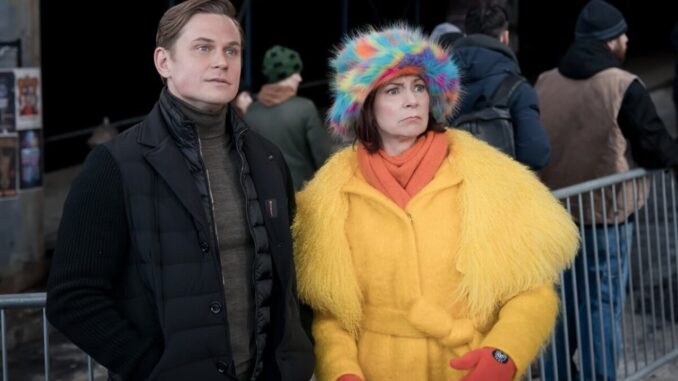
Elsbeth Crosses Over With Another CBS Hit: What It Means for the Story
There’s a unique thrill in the collision of fictional worlds. When the established boundaries of a beloved series blur, and characters from disparate narrative landscapes suddenly find themselves sharing a stage, it’s more than just a marketing ploy; it’s an event. For Elsbeth, CBS’s delightful procedural follow-up to The Good Wife and The Good Fight, the prospect of crossing over with another network hit isn’t just fan service—it’s a narrative seismic shift, promising to deepen its roots, affirm its unique voice, and expand the very universe it inhabits. And while the prompt leaves the “other CBS hit” open-ended, for Elsbeth, the most potent and story-rich crossover isn’t with a gritty crime drama or a high-stakes action thriller, but a return to the very legal world that birthed her: the sophisticated, morally ambiguous, and utterly captivating universe of The Good Wife and The Good Fight.
Let’s assume, then, that Elsbeth Tascioni, the kaleidoscopic genius with the perpetually curious mind, finds herself entangled with the lives or cases of characters from her previous iterations. What does this mean for the story of Elsbeth?
Firstly, it serves as a powerful validation and deepening of Elsbeth’s character arc. When we first met Elsbeth, she was often the disarmingly odd, brilliant-but-baffling lawyer called in for specific, often high-stakes depositions. She was a disruptor, a delightful anomaly in the buttoned-up, often cynical legal world of Lockhart/Gardner. Her new series, Elsbeth, has allowed her to blossom from a quirky guest star into a fully-fledged protagonist, showcasing her unique investigative methods in a new, more expansive context. A crossover, particularly one that brings her into contact with figures like Alicia Florrick, Diane Lockhart, or even Marissa Gold, would be a profound moment of affirmation. Imagine Diane seeing Elsbeth, no longer just a brilliant-but-scattered colleague, but a successful detective, thriving in her own element. This reunion wouldn’t just be nostalgic; it would concretely demonstrate Elsbeth’s growth, proving that her eccentricities are not hindrances but the very wellspring of her genius. It would allow her, perhaps for the first time, to be seen and respected for her entire self by those who once viewed her primarily through the lens of her legal prowess.
Secondly, such a crossover significantly expands and enriches the show’s established universe, adding layers of narrative texture and thematic resonance. Elsbeth already exists within the Good Wife world, but a direct character interaction would explicitly confirm and fortify this connection. It means that the legal precedents, the political machinations, and the lingering moral questions that defined The Good Wife and The Good Fight are still alive and well, subtly influencing Elsbeth’s present-day cases. A case originating from the old firm, or involving a client from that era, would imbue Elsbeth‘s procedural mysteries with a deeper history and higher stakes. It allows for a vibrant dialogue between Elsbeth’s intuitive, almost childlike wonder at the mechanics of crime and the seasoned, often jaded pragmatism of her legal predecessors. This juxtaposition would not only heighten the humor and charm of Elsbeth’s approach but also underscore the timeless pursuit of justice, viewed through different, equally valid lenses.
Finally, and perhaps most intriguingly, a crossover of this nature provides fertile ground for exploring the past informing the present, both professionally and personally. What lingering threads might remain from a past case that Elsbeth was involved in? How might a former adversary, now a powerful figure, react to her current success? Such encounters could reveal facets of Elsbeth’s past that inform her present instincts, or even challenge her current understanding of justice. It could be an opportunity for a deeper dive into her own emotional landscape, as she navigates familiar faces and old memories while maintaining her determinedly forward-looking, optimistic perspective. The contrast between the New York City backdrop of Elsbeth and the Chicago/New York legal landscapes of the previous shows would also offer a compelling visual and thematic counterpoint, highlighting how Elsbeth has adapted and thrived in a new environment, carrying her unique brand of brilliance with her.
In essence, a crossover with The Good Wife universe for Elsbeth is far more than a stunt; it’s a narrative homecoming. It provides not just a momentary jolt of nostalgia, but a profound affirmation of Elsbeth’s journey, an expansion of her narrative playground, and a rich, layered exploration of how the past continues to shape the present. It ensures that Elsbeth doesn’t just entertain, but truly blossoms into a deeper, more connected story within a beloved and complex fictional world.
